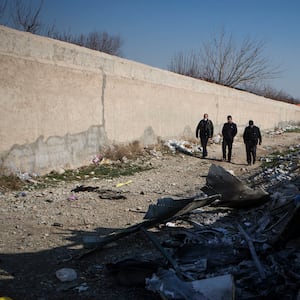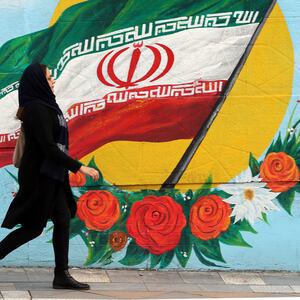Why did Iran not ground flights as its air space became a war zone? And why would a missile battery be so close an international airport? Those are just a couple of the questions surrounding the crash of Ukrainian International Airlines Flight PS752.
Well over 1,000 people flew out of Tehran on the night when Iran launched its cruise missile attack on U.S. bases in Iraq early Wednesday morning local time, and they were on exactly the same flight path, but only PS752 turned into a fireball and crashed minutes after takeoff.
Airlines from seven different countries had flights leaving Tehran between midnight, local time, and 6:12 a.m. when the Ukranian Boeing 737 took off.
ADVERTISEMENT
Western intelligence experts believe that Flight PS752 was hit by an Iranian surface-to-air missile. If so, the 176 people who died seem to have been the victims of a grim game of Russian roulette–why would this jet be targeted when nine others that preceded it were not?
And this is just one of the pressing questions raised in the midst of the disputes raging around the disaster.
The missile strike on Iraq was launched at around 2 a.m. Wednesday, Iranian time, from sites in western Iran. And yet there was no attempt by the Iranians to close down their commercial air space once it became part of a war zone—when it was most likely that the U.S. would launch a retaliatory strike on Iran.
It was left until after the event for individual airlines to cancel their flights into and out of Iran and to avoid flying over Iranian air space, which most international airlines did on Wednesday—the FAA banned all U.S. airlines from Iranian air space, citing “heightened military activities and increased military tensions.”
According to data provided to The Daily Beast by the tracking site Flightradar24, the air traffic out of Tehran that night covered a wide range of airlines and destinations. The Ukrainian jet was preceded 22 minutes earlier by the largest jet to leave Tehran that night, a Boeing 777 of Qatar Airways, an all-cargo flight to Hong Kong.
The other flights, all carrying passengers, included two by Turkish Airlines to Istanbul, one by Turkish airline Atlas Global to Istanbul, Qatar Airways to Doha, Aeroflot to Moscow, Austrian Airlines to Vienna, Lufthansa to Frankfurt and Azerbaijan Airlines to Baku.
Seven of the flights were Airbus airplanes, five single-aisle jets and two larger wide-body jets. The Azerbaijan flight was on the smallest of the airplanes, an Embraer 190. Totaling up the capacity of these airplanes, and assuming, conservatively, that the flights were around 80 percent full, around 1,500 people left Tehran that night without knowing how close they came to disaster.
The only possible reason why a civilian airliner might mistakenly be targeted by a missile battery is if its transponder, the automatic system that continuously transmits the identity of the airplane, was not working and the airplane appeared to be a “rogue” intruder.
But Flightradar24 confirms that the Ukranian 737’s transponder was working throughout taxiing, takeoff, and climb and stopped transmitting only at the time it began its fiery descent. Its radar track to that point was identical to the other earlier flights climbing to cruise altitude.
Tehran’s air traffic controllers were responsible for directing all the flights out of Iranian air space until they were accepted by the controllers in neighboring countries. They would have been the first to see that Flight PS752 had abruptly disappeared from their radar while following its designated heading.
Why a military missile unit familiar with its location so close to a continually used international airline route would ever be activated, let alone fire a missile, without first contacting the air traffic controllers and without being overseen by a competent command and control regime is completely baffling.
If this did occur–and Iranian authorities are still insisting that it did not–then it is inexcusable. Meanwhile the Iranians have implied that the crash investigation will meet international standards by inviting the participation of both the National Transportation Safety Board, representing the U.S., and the French Bureau d’Enqueues et d’Analyses, BEA, one of the world’s most experienced and highly regarded crash investigation teams.








